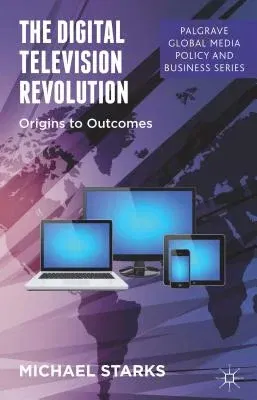M Starks
(Author)The Digital Television Revolution: Origins to Outcomes (2013)Hardcover - 2013, 15 August 2013

Qty
1
Turbo
Ships in 2 - 3 days
In Stock
Free Delivery
Cash on Delivery
15 Days
Free Returns
Secure Checkout

Part of Series
Palgrave Global Media Policy and Business
Print Length
264 pages
Language
English
Publisher
Palgrave MacMillan
Date Published
15 Aug 2013
ISBN-10
1137273348
ISBN-13
9781137273345
Description
Product Details
Author:
Book Edition:
2013
Book Format:
Hardcover
Country of Origin:
US
Date Published:
15 August 2013
Dimensions:
21.84 x
14.48 x
2.29 cm
ISBN-10:
1137273348
ISBN-13:
9781137273345
Language:
English
Location:
London
Pages:
264
Publisher:
Weight:
430.91 gm